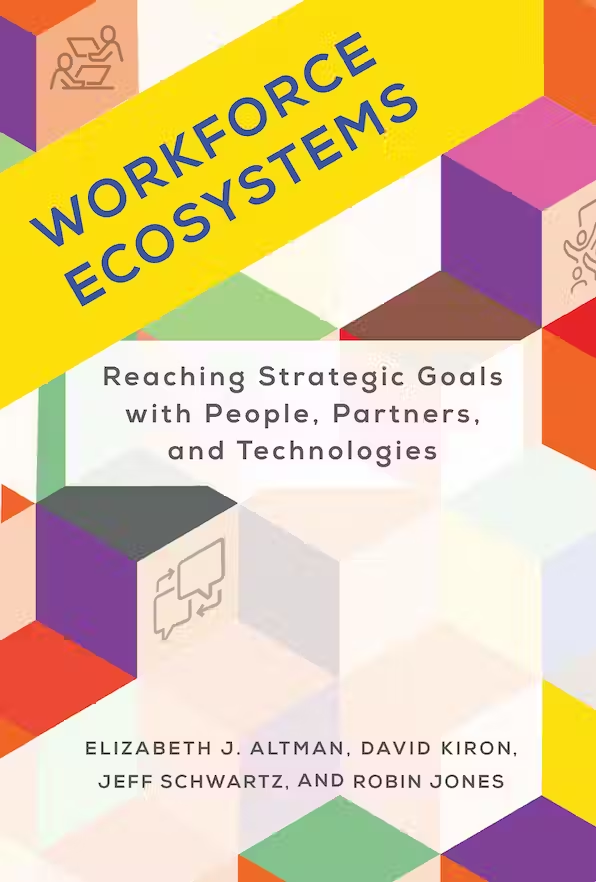jobmarket labourmarket careerdevelopment talentdevelopment upskilling
Workforce Ecosystems
The book "Workforce Ecosystems: Reaching Strategic Goals with People, Partners, and Technologies" written by Elizabeth J. Altman, David Kiron, Jeff Schwartz, and Robin Jones, explores the new paradigm for managing and developing the workforce in a rapidly changing business landscape. The authors argue that traditional HR practices are no longer sufficient to address the complex challenges facing organisations today, and instead, a more holistic approach is required.
The authors develop the concept of workforce ecosystems and how they will become a crucial aspect of future workplaces. The workforce ecosystems are defined as the internal and external contributors who support an organisation's work. This includes employees, contractors, vendors, partners, and even customers. By embracing a diverse and integrated approach to workforce management, organisations can improve their agility, flexibility, and overall performance.
become a crucial aspect of future workplaces. The workforce ecosystems are defined as the internal and external contributors who support an organisation's work. This includes employees, contractors, vendors, partners, and even customers. By embracing a diverse and integrated approach to workforce management, organisations can improve their agility, flexibility, and overall performance.
To build successful workforce ecosystems, organisations need to adopt a strategic approach that includes four key components. These components are:
- Understanding the Workforce Ecosystem: Organisations must have a clear understanding of their workforce ecosystem, including the various contributors and their roles.
- Creating an Integrated Workforce Strategy: Organisations need to develop an integrated workforce strategy that aligns with their business objectives, taking into account the needs and contributions of all ecosystem members.
- Building Agile Workforce Capabilities: Organisations must develop agile workforce capabilities that allow them to respond quickly to changing market conditions, customer demands, and other external factors.
- Leveraging Digital Tools: Organisations need to leverage digital tools, such as analytics and automation, to manage their workforce ecosystems more effectively.
By embracing workforce ecosystems and adopting a strategic approach to workforce management, organisations can position themselves for success in an ever-changing business landscape.
In conclusion, the book provides valuable insights into the importance of workforce ecosystems and how organisations can adopt a strategic approach to manage them effectively. By building successful workforce ecosystems, organisations can achieve these goals and thrive in the future of work. Drawing on case studies and real-world examples from a range of industries, the book highlights the importance of aligning workforce strategy with business goals, and offers practical guidance on how to develop a workforce ecosystem that can drive sustainable growth and competitive advantage.
Overall, "Workforce Ecosystems" provides a valuable roadmap for HR professionals, business leaders, and anyone interested in the future of work. It offers a fresh perspective on how to navigate the challenges of the 21st century workplace, and provides actionable insights for building a more resilient, adaptive, and effective workforce.
The importance for organisations of leveraging digital tools to manage their workforce ecosystems more effectively is highlighted throughout the book.
One such tool, our talentguide Library, can play a vital role in effectively managing these ecosystems by focusing on the necessary skills and competencies needed for an organisation to succeed in the future of work. This future entails fulfilling various roles and promoting greater mobility within the workforce.



.jpg?width=300&name=Talentguide%20(1).jpg)

